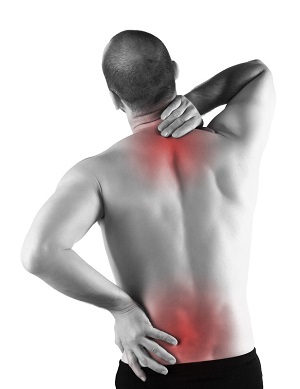 Travelling on a plane may be adventurous for some of us. In an equal measure, travelling can also be a horrible experience especially where it becomes a huge source of pain in the back, the legs, the neck and so on. Muscle soreness caused by the upward siting position on the plane for hours can be another source of discomfort in a plane flight. Research has been done by psychologist, Albert Matheny about a routine of stretches that can keep one on point during a flight to avoid the aforementioned discomforts.
Travelling on a plane may be adventurous for some of us. In an equal measure, travelling can also be a horrible experience especially where it becomes a huge source of pain in the back, the legs, the neck and so on. Muscle soreness caused by the upward siting position on the plane for hours can be another source of discomfort in a plane flight. Research has been done by psychologist, Albert Matheny about a routine of stretches that can keep one on point during a flight to avoid the aforementioned discomforts.
The cause of these sores during a flight is simple. When one is seated in a plane seat, the hip flexors and hamstrings are shortened. Muscles in the low back and the ones that connect to the hips e.g. quads and glut are shortened.
This shortening causes the muscles to tighten up when the person stands again. Similarly, legs are bent for hours during a flight and this blocks the circulation of blood to nourish the muscles and this causes pain.
There are several steps that should be taken to reduce fatigue after a flight:-
- Have back support during the flight: using pillows provided by the flight attendant prevents slouching that causes back pain by keeping the spine straight. Carry a neck pillow on the plane to deal with neck pain. Back-braces also reduce back pain.
- A good posture should be maintained. The legs should be positioned at right angles. The feet should be propped up with pillows to bend the knees at right angles.
- Move around the plane during a flight stretches the muscles providing more flexibility to the spine and eases stiffness. It also allows the blood to circulate around the body.
- Alternating heat therapy and ice treatment stretches muscles around the spine and numbs back swellings respectively during a flight.
- Taking some pain medication prior to the flight may help in reducing muscle soreness during a flight. .
- Some exercises such as the Inchworm, kneeling hip flexor, single pigeon, reclined twist and standing calf stretch will do help to reduce muscle soreness and keep you feeling fresh after your flight.
- To stay lose on board the flight, certain maintenance stretches will keep the blood circulating into the muscles. Sitting tall with the hips against the back of the seat and the chest open prevents the back and neck from hurting. The stretches named below will ensure resting of the muscles during the flight.
- Arm across is an exercise where the right arm is stretched across the left hand side of the body and vice versa.
- Ankle over opposite knee is done by placing the right ankle over the left knee alternating and pressing down the right knee above the left knee.
- Do leg extensions around 5 times to flex the muscles around the knee. This prevent you from feeling rusty and stiff.
Do these exercises and you will experience less muscle soreness and pain after your flight!
For more articles go to http://clubonefitness.lifestyleezine.com

 You know the feeling – you’ve worked so hard at the gym getting into shape that your muscles just ache. Rest and relaxation are key, but sometimes you need a little extra help to get you through the day without too much ache. Sore muscles occur with injury, overuse or when beginning a new intense physical activity. Having sore muscles can a be a sign of positive improvement after exercise, but they can also be a sign of a serious injury or muscle damage if the soreness is severe. There are some over-the-counter (OTC) medications that can help relieve your pain and allow you to function with your regular daily activities and get some sleep at night.
You know the feeling – you’ve worked so hard at the gym getting into shape that your muscles just ache. Rest and relaxation are key, but sometimes you need a little extra help to get you through the day without too much ache. Sore muscles occur with injury, overuse or when beginning a new intense physical activity. Having sore muscles can a be a sign of positive improvement after exercise, but they can also be a sign of a serious injury or muscle damage if the soreness is severe. There are some over-the-counter (OTC) medications that can help relieve your pain and allow you to function with your regular daily activities and get some sleep at night.